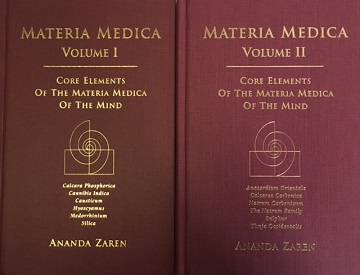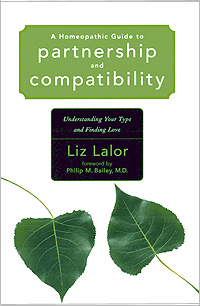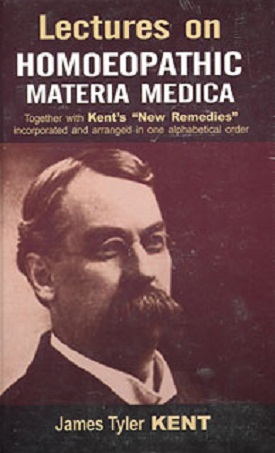Homeopathy and the Elements by JAN SCHOLTEN [#SCHELE]
$102.00
Description
Book Review
[From the British Homoeopathic Journal Volume 86, January 1997]
Homoeopathy and the Elements.
Jan Scholten.
“An unknown picture needs an unknown remedy,” suggests Jan Scholten in his new book, in which he describes a symptom pattern to the Periodic Table by which one may predict sufficient characteristics of a homoeopathic nature. It’s tempting to reply in the words of the American musical ‘It ain’t necessarily so!’, but who’s to say it nay? Scholten, in this highly controversial book, is not claiming that his ideas are complete, or properly proven. He quite properly takes pains to acknowledge that they are only a beginning which needs to be confirmed by conventional homoeopathic research.
In his earlier book Homoeopathy and Minerals Scholten developed the concept of the salts as the sum of their anion and cation components. Having identified key concepts, or ‘themes’ of known medicines, he predicted the likely homoeopathic drug pictures of hitherto unknown salts, illustrating his theory with successfully treated cases.
This clinical success led Scholten to extend his thinking to the Periodic Table as a whole. The elements increase steadily in atomic weight, and their differing structures are represented in their arrangement in the Table. Were these elemental physical structures matched by homoeopathic characteristics such that one might predict the likely homoeopathic use of a medicine from its position in the Periodic Table? Although not the first attempt to answer this question (Roger Savage’s foreword mentions the work of Sherr and Sankaran), this is undoubtedly the most comprehensive attempt yet. Many elements in the Periodic Table have never been used in homoeopathy, a situation which Scholten likens to early maps where unexplored countries are shown as white spaces.
The book starts with a 72-page explanation of its essential ideas. The next 740 pages contain the new materia medica, which encompasses all but the Lanthanides and some 7th series elements. A 20-page Epilogue covers a number of ‘principles of practice’ issues, some of them controversial. At every stage he uses examples to illustrate his meaning, and this makes it easy to follow. The last 46 pages provide comprehensive and very useful graphs and tables which summarize the work, a bibliography, and separate indices of concepts and medicines. This is well done, although the explanation of the symbols used would have been better placed prominently at the beginning. (They differ from those of other authors. We are shortly to have a comprehensive Dictionary of Homoeopathy, so is it too much to hope for a generally accepted comprehensive set of symbols to avoid confusion?)
In a chapter on the source of drug pictures Scholten discusses both the value and the limitations of our two main sources of information about drugs: provings and clinical experience. He adds his own contribution: ‘Generalization’, or extrapolation by inference from what is known of neighbouring elements. Scholten acknowledges that these are subject to error, both in the current descriptions, and in the way that they may be overshadowed by other features in a specific case. No correlation is found between frequency of prescription and its environmental occurrence.
The bulk of the book concerns materia medica based on the theory concerning the Periodic Table. This is usually set out in 7 lines (‘Series’) and 18 columns (‘Stages’) by which the physical structures of the atoms are related to each other. An alternative is a 7-ring spiral, with hydrogen at the centre. Each of these is described in a short paragraph. Each series has a theme, to do with being, one of man’s ‘7 ages’, a geographical area, sense datum and tissue. The ‘Stages’ are those of any project: the idea, its initiation, planning, development, execution, use at its prime, its decline and decay. Each medicine has these two items by which it can be described. Natrum, for example, is in the first stage, some of whose characteristics are simplicity, impulse, spontaneity, naivety, immaturity, being alone, and destruction. Relating the concepts of each of these lists gives a third list, corresponding to those characteristics expected in a potency of the element itself. These include simple love, relationships made impulsively which get stuck at the beginning, being alone in the home and so on. Since Natrum is known as a salt, this list must later be combined with another derived from the cation.
Quoting one of Scholten’s cases may help, although there is so much in the book that serious study is needed to make it properly comprehensible. A patient complained of various minor complaints including spots on his chin, teeth grinding, painful penile rash, receding hair, etc. He was a very committed manager who had planned each stage of his career carefully. This indicates a medicine from the ‘Gold’ series. Which ‘stage’? At age 35 he had not reached the top, so he was between stages 1 and 10. He had passed the planning and initial stages of his career path, which was against stages 1-5. He had responded briefly to Osmium, stage 8, which indicates it was not the best prescription. Detailed questioning established that he was practising as a manager, that he felt he was still learning, and could profit from constructive criticism and positive feedback; he was keen to co-operate and learn from it, and could still be subject to self-doubts. These might relate to confused situations, to which he was averse; he preferred a clear overview of his problem. These characteristics are reflected in the description of stage 7 of the 18, which is the element rhenium. Following a potency of Rhenium he felt calmer and better generally, and his physical complaints went away and stayed away. Since some of these features had not been noted previously in the materia medica of this medicine, they were added to it tentatively after the success of this prescription.
The Materia Medica section has the following headings:
Introduction. The homoeopathic history of the drug is traced, with references where appropriate. Signature. Origin of name, properties- and uses of the element or compound.
Concepts. Those of the relevant Series and Stages, mostly one-word characteristics.
Group analysis. The combination of the 2 above lists to form ‘catch-phrases’, which we are told is often enough to form the basis of a prescription.
Picture. Story-form unfolding of a clinical picture, based on all available information.
In this: Expressions: key mental/emotional symptoms.
General: key general symptoms.
Complaints: a summary of local symptoms from all sources, brief where standard knowledge is great. We are advised to use this section cautiously, especially in lesser-known medicines.
DD: a list of similar medicines, groups of medicines and Stages from which it must be distinguished. Sometimes helpful distinguishing features are included.
Case: Where available, cases are included, except for those in the earlier book.
(Of these he comments that, at the time of writing, all but 2 cases were doing well.) Also in his Epilogue the author presents a series of provocative propositions, only some of which relate to the main thesis of the work. He might have been better advised not to include these, as he is being controversial enough already; however, compromise is clearly not his style. He argues against the existence of a single right remedy, finds monthly repetition works for him in practice better than waiting till relapse occurs, describes side-effects as symptoms of an incorrect remedy, obstacles to cure merely as a feature of a case requiring therapy of itself, and so on. Each would make a good debate.
This book must represent the biggest potential addition to the concepts of homoeopathy since Hahnemann’s original discoveries. This may sound sweeping, but if not, what is? I say ‘potential’ advisedly, as it all remains to be proven, in practice, by traditional homoeopathic and modern research methods. Data collection is now possible, which should facilitate this process, and I understand that the book itself is part of some programs. I hope all standard programs will soon have it.
It is not easy for someone used to traditional history-taking to adapt to these new ideas. Scholten very wisely suggests several readings of the chapters on Series and Stages, for until these are committed to memory and become familiar, it will remain difficult to use. While I admire the clarity of thought Scholten brings to the many succinctly stated examples he gives, I personally find it far less easy to see which of several possibilities is paramount in a given case.
It has been objected that a work such as this is unscientific, and therefore a disservice to homoeopathy at a point in its history when, more than ever before, its future depends on more exacting evidence than that of a few cases. But where does science begin? In his Foreword Ferdnand Debats refers to this problem. Scientists have historically started from an idea in question form. This is the heuristic, or searching, stage of research. Without it, no ‘quantum leaps’ in knowledge are likely to occur. If you accept the place of heuristics in the list of scientific method, and you place this work there, you will have the right perspective from which to consider the theory Scholten propounds.
I hope the work will be given a fair hearing, and that many of us will eventually contribute to an increase in our knowledge which, while it may validate most of what is written here, will also probably modify it.
JOHN ENGLISH
British Homoeopathic Journal
Volume 86, January 1997






Reviews
There are no reviews yet.